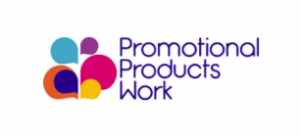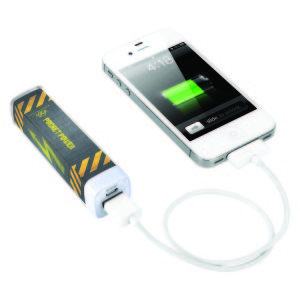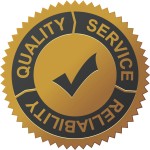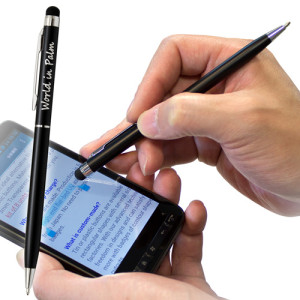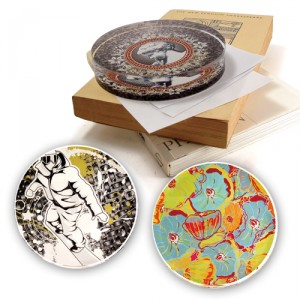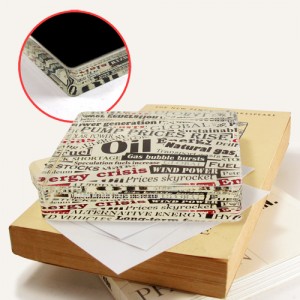25 Insane (But True) Facts About Promotional Products
If you’re in the business of finding promotional products, you know the impact they can have on an organisation’s marketing efforts. But do you know these fun facts about promotional products?
- Eight in 10 consumers own between one and 10 promotional products.
- Fifty-three percent of these people use a promotional product at least once a week.
- Six in 10 of them keep promotional products for up to two years.
- Only one in five people will trash an unwanted promotional product.
- Before receiving a promotional product, 55 percent of people had done business with the advertiser. After receiving a promotional product, 85 percent of people did business with the advertiser.
- With nearly six thousand impressions, bags generate more impressions than any other promotional product in the U.S.
- Thirty-one percent of U.S. consumers own a promotional bag.
- At one-tenth of a cent, bags tie with writing instruments for the lowest cost per impression of any promotional product in the U.S.
- The first known promotional products – commemorative buttons – trace back to 1789 when George Washington was elected president.
- Fifty-three percent of the time, promotional products create a more favorable impression of the advertiser.
- Forty-eight percent of consumers would like to receive promotional products more often.
- Consumers hang on to promotional products for an average of 6.6 months.
- Sixty-nine percent of consumers would pick up a promotional product if they deemed it useful.
- Sixty-three percent of consumers pass along the promotional products they no longer wish to keep.
- Eighty-nine percent of consumers can recall the advertiser of a promotional product they’d received in the last two years.
- Ninety-one percent of consumers have at least one promotional product in their kitchen, 74 percent have at least one in their workspace, 55 percent have at least one in their bedroom.
- Seventy-seven percent of consumers say a promotional product’s usefulness is the number-one reason to keep it, with health and safety products, computer products and writing instruments ranked as the most useful.
- The top five buyers of promotional products are clients in education, finance, not-for-profit, healthcare, and construction.
- Wearables are the top product category, followed by writing instruments, bags, calendars and drinkware.
- The first promotional product tradeshow was held in 1914 – there were 32 exhibitors.
- Women are more likely to have bags, writing instruments and calendars, whereas men are more likely to own shirts and caps.
- Ownership of logoed outerwear is highest in the Midwest, with 15 percent of people owning an item.
- Logoed mugs in particular are more effective advertising than radio and television spots; 57 percent of people were able to recall the advertiser on a mug, versus 32 percent of radio and 28 percent of T.V.
- Adding a promotional product to the media mix increases the effectiveness of other media by up to 44 percent.
- Promotional products draw as many as 500 percent more referrals from satisfied customers than an appeal letter alone.
Are you still skeptical about the power or promotional products?
With thanks to PPAI
Power Banks
Power Banks - what you need to know when purchasing Power Banks.
There is a growing demand for power banks and there are many differences! Power Banks differ from one style to another predominantly with the main difference being the quality of the battery. The quality relates to the type of Lithium battery, true capacity, cell grade, regulated output voltage/current and protection circuitry. In fact 70% of the unit cost for a power bank can be devoted to the quality of the battery.
The capacity of a power bank gives an indication of how much you can charge. For example, a capacity of 2600mAh allows an iPhone 5 (battery approximately 1570mAH) to be fully charged, however a Samsung Galaxy S5 (battery approximately 3000 mAH) cannot be fully charged. A power bank at 2200 mAH will not fully charge an iPhone 5S partly due to voltage equation output.
It's all about Output and Input - This part controls the flow of capacity into the device to be charged. For example, you can have a very high capacity 5200 mAH yet it takes forever to charge. Think of a bucket filled with water, the smaller the hole in this bucket (output) the longer it takes for the water to run out. The output of the power banks enables charging of only smart phones or tablets. In general, smart phones need an output between 0.5A and 1A, while tablets need a least 1A to 2A. The higher the ampage the faster your device charges.
Inside the power bank is a lithium battery. There is a big difference to quality depending on the battery. Cheap batteries might catch fire or even explode when over charged. The correct circuitry to prevent overheating and reverse charging must be present. Such goods should have MSDS (material safety and data sheets) when imported.
Batteries - batteries fall into 2 major groups both of which can be called 'rechargeable'. A Lithium ion - tends to be rectangular or cylindrical and is usually cheaper. They are hard shelled with a strong casing. They weight a little bit more, are sturdier and are hard to puncture. They also have high energy densities and cost less as they suffer from ageing, even when not in use. The Lithium Polymer - tends to be thinner and come in a silver bag. They are soft shelled and can be damaged easier. They weight less and can fit into small shells particularly the custom designed PVC moulded power banks. Although these batteries are more expensive - they are a better battery.
Questions to ask when purchasing Power Banks
- Is the supply of your power bank from a company that meets international compliance?
- Do the Power Banks come with relevant compliance certificates be that CE, FCC, Reach, ROHS and UN38.3 for transport?
- What battery is in the power banks and are they a brand like Samsung or generic?
- Do the power banks come with control circuitry to regulate the voltage and current output to prevent your phone charging the power bank?
- How fire retardant is the casing surround the battery?
- What features are actually in your power bank - battery type, protection circuitry, true capacity (mAh), stable output current and voltage, certification, 1 or 2 Amp output, dual capacity indicator, cable quality and designs, and charging tips and plastic or metal casing?
These are all important questions to check on when purchasing POWER BANKS. If one price is ridiculously cheaper than others, then the question one must ask is what is the quality of the battery. Don't get short changed - always go with a quality product - because you may get burnt literally.
Promotional Products provide affordable, accountable, measurable advertising.
In these economic times - now more than ever, marketers need to reward and build brand loyalty. It is important to continue to acknowledge and thank clients, employees and suppliers.
Marketers spend more than $1.34 billion dollars (AUS) and $121 million (NZ) a year on promotional products for one reason, they work.
- 52% say their impression of a company is more positive after receiving a promotional product gift
- 76% recall the name advertised on the product
- 55% keep the item for more than one year
- Nearly 50% of recipients use them daily
- 52% of people do business with a company after receiving a promotional product
- Spend less, achieve more and remind people about the benefit of doing business with you
Promotional Products in the Home:
- How many people have at least one promotional product in their kitchens? 91%
- How many have 2 or more in their kitchens? 81%
- In fact, the kitchen is the #1 place people use and keep their promotional products.
(People spend on average 3-5 hours a day in their kitchens)
Promotional Products in the Office:
- How many people have at least one promotional product in their offices? 74%
- How many have 2 or more in their offices? 59%
- In the work place, more than half of people hold onto their promotional product from 1 to more than 4 years
Reach & Recall:
- 71% of business travellers surveyed reported receiving a promotional product in a 12 month period
- 33.7% of this group had the item on their person
- 56% of people kept their promotional product for more than one year
- 76.4% said they kept their promotional product because it was useful
- 76.1% of the respondents could recall the advertisers name on the product
How effective are Promotional Products in staff retention, motivation and brand interest?
- 75% of Human Resource mangers surveyed are using promotional products in recognition programs
- 72% of marketing and HR managers say that promotional products are very effective in motivation and retention of staff
- 100% of advertisers said that adding a promotional giveaway returned a favourable response to their campaign
- 69% of advertisers said promotional products increased brand interest and 84% it created more favourable impressions of the brand itself
Understanding the medium:
- A product is just a product, until it is linked with a promotion, it then becomes an advertisement
- The most successful advertising and marketing campaigns are the result of a planed strategy.
- Throwing products at your target market without that planning is a waste your marketing dollars
- The product is only one component in the whole campaign
- The creativity used to get a response is the key to increasing profits and promoting brands
Successful campaigns require:
- Strategic ‘logistical’ and ‘emotional’ roll out
- Action engagement triggers
- Data collection analysis
- Technical logo application knowledge
- Creating the difference between a ‘passive’ and ‘active’ promotion
Stylus Pens
These metal stylus pens are perfect for screen touching & writing. Stylus Pens come with a soft plastic headphone plug and is suitable on screens for all smart phones & tablets. Decoration with laser engraving allows your logo to stand out well on the enamel coated barrel. The stylus is easy to carry - just plug into the earphone socket on your phone.
- size * 60mm x 9mm (not including string & plug)
- minimum order * 100 units
- 5-7 day express service
Take a look at our full range of stylus pens here
Paper Weights - check out our new range of paper weights. Custom printed Paper Weights are round or square with your design in full colour. Paper Weights have a velvet backing to prevent scratching. Paperweights make an ideal promotional gift and keeps your advertising message in front of your client at all times. Minimum order as low as 10 units. Available in two shapes - round or square.
Decorative glass or acrylic paperweights fit easily into the hand and are actually meant to be handled and viewed from various directions through the dome, which acts like a lens to make the design change in its appearance with its movements in an attractive way.
The Origin of Paper Weights
Antique paperweights were made in the "classic" years between 1845 and 1860 primarily in three French factories named Baccarat, St. Louis, and Clichy. Together with inventor Justin Schubert of a neighbouring town, they made between 15,000 to 25,000 weights in the classic period. Weights (mainly of lesser quality) were also made in the United States, United Kingdom, and elsewhere, though Bacchus (UK) and New England Glass Company (US) produced some that equaled the best of the French. Modern weights have been made from about 1950 to the present.
In the US, Charles Kaziun started in 1940 to produce buttons, paperweights, inkwells and other bottles, using lamp-work of elegant simplicity. In Scotland, the pioneering work of Paul Ysart from the 1930s onward preceded a new generation of artists such as William Manson, Peter McDougall, Peter Holmes and John Deacons. A further impetus to reviving interest in paperweights was the publication of Evangiline Bergstrom's book, Old Glass Paperweights, the first of a new genre.
A number of small studios appeared in the middle 20th century, particularly in the US. These may have several to some dozens of workers with various levels of skill cooperating to produce their own distinctive "line". Notable examples are Lundberg Studios, Orient and Flume, Correia Art Glass, St.Clair, Lotton, and Parabelle Glass.
In the late 1960s and 1970s, artists such as Paul Stankard, his former assistant, Jim D'Onofrio, Chris Buzzini, Delmo and daughter Debbie Tarsitano, Victor Trabucco and sons, Gordon Smith, Rick Ayotte and his daughter Melissa, and the father and son team of Bob and Ray Banford, began breaking new ground and were able to produce fine paperweights rivaling anything produced in the classic period.

